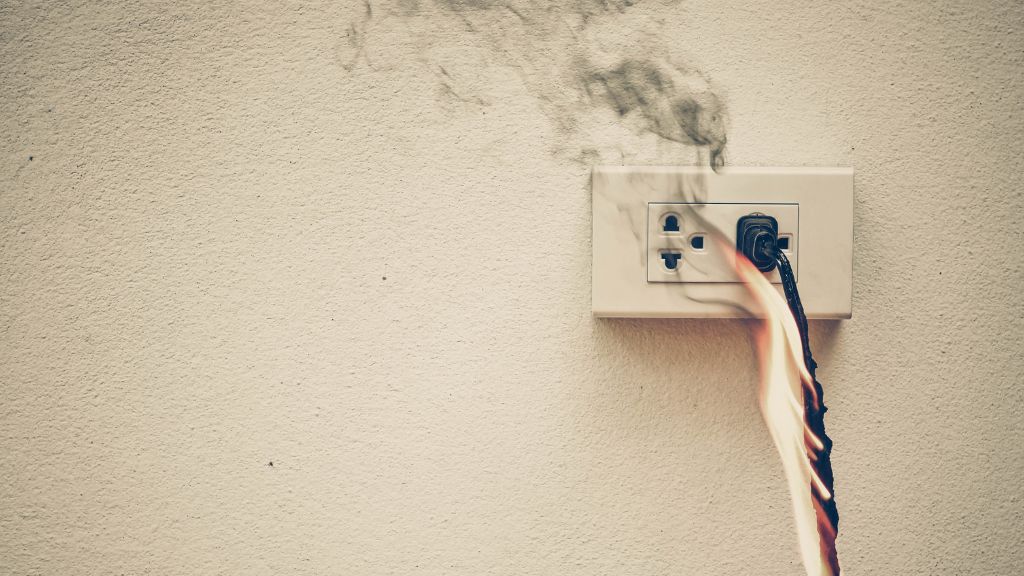
Electricity is the magic behind everything that runs in our homes: from refrigerators to the main wiring of our houses. A beneficial force if handled properly, electricity can go wayward and that can be a frightening and damaging affair. This event is called a short circuit and it can be prevented with a planned wiring system.
What is a Short Circuit?
The circular flow of energy from an electrical service panel and back again is called an electrical circuit. This flow of current is broken and continuous. You can connect items along its path of flow such as flights and outlets. These items simply borrow from the circuit and do not break its path.
Electricity likes its path to be unhindered with no resistance. Materials like copper are used as conducting agents because of their least resistance but materials like fiber or wood are highly resistive to current flow. Even iron and steel are poor conductors of electricity but better than fiber or wood.
The exact path of electric current (or shall we say energy) is to flow back to the ground but if the current comes across a shorter path, it will naturally seek that route (a shorter path means a path of least resistance). Electricity immediately changes its course to reach the ground by this easier, shorter path.
What is a Short Circuit: How Does a Short Circuit Form and What is its Effect?
Short circuits in the electrical wiring system are caused by:
- Surges or build-up of electricity
- Deterioration of electrical cable sheathing
- Screws or nails piercing the walls and coming into contact with the wires beyond
- Damaged or old outlets, appliances, lights, switches, or other electrical devices
- Loose connections in the electrical box or wiring
- Water or any kind of fluids in contact with the electrical wiring
- Pests or vermin chewing through the wires
A short circuit can cause fires or electrocution when a human body comes in contact with its path of least resistance. The current will travel through the body and cause injury and even death through fires, electrocution, or fires. Short circuits demand more power which means high temperatures and electrical arcs that can set fire to flammable materials such as fabrics or wood and even melt plastics.
Types of Short Circuits
1. Normal Short Circuit
In a normal short circuit, a hot or powered wire comes in contact with a neutral wire which immediately drops its resistance. The current moves to another path when this happens.
2. Ground Fault Short Circuit
In a ground fault short circuit, the hot wire or powered wire will be in touch with the ground section of any of the following items supplied by electrical current:
- Bare ground wire
- Outlet
- Appliance
- Device
- Electrical box
The Bottom Line: How Do You Fix a Short Circuit?
Since circuit breaker boxes or electric service panels are dangerous, remember to leave their dead-front cover in place. The cover protects the energized metal lugs which remain live even after the main breaker is off. Here’s what you need to do to fix a short circuit:
- Isolate the circuit: Find out the faulty circuit and make sure you isolate it from the other wires in the electrical box.
- Make a safer circuit: Switch off the circuit breaker and remove it by rocking it back towards the side of the electrical service panel. You can lift off the breaker.
- List all the devices: Identify all the devices connected to the circuit including A/Cs, lights, appliances, switches, outlets, and others (even junction boxes).
- Examine these devices: Check the outside of each of these devices and look for blown fuses. Keep an eye out for burn marks, melted plastic, or sharp smells that indicate a short circuit.
- Look inside the devices: Check the wires inside each device as much as possible practically. Take a look at the junction boxes also that may not be attached to the device in question. Take off the light fixtures and check their electrical boxes.
- Check cables in the attics and walls: Wherever possible examine the wiring in between the devices since very often wires are closed up in walls. It may be difficult but with a flashlight, you can examine them as they run along the posts in your attic.
Short Circuits FAQs:
1. What is a short circuit?
An abnormal electrical connection between two nodes with different voltages of an electrical circuit is called a short circuit. Technically, a short circuit results in an electrical current limited only by the Thevenin resistance of the rest of the electrical network. This causes damage to the circuit, an explosion, fire, or overheating.
2. What is a short circuit example?
An example of a short circuit is a power line being damaged by a storm and electricity being cut off. A short circuit is an unintentional connection of low impedance or resistance in an electrical circuit such that extreme and often damaging current floors through it.
3. How to tell a short circuit apart?
Here are 6 warning signs of faulty wiring (short circuit):
4. How do you fix a short circuit?
Follow these steps to fix a short circuit in a jiffy:
5. Why do short circuits cause a fire?
An electrical short circuit causes the flow of an overload current. This huge amount of current leads to heat in the wiring system which increases the temperature of the surrounding materials. The temperature goes high until the ignition temperature and combustion occur.






